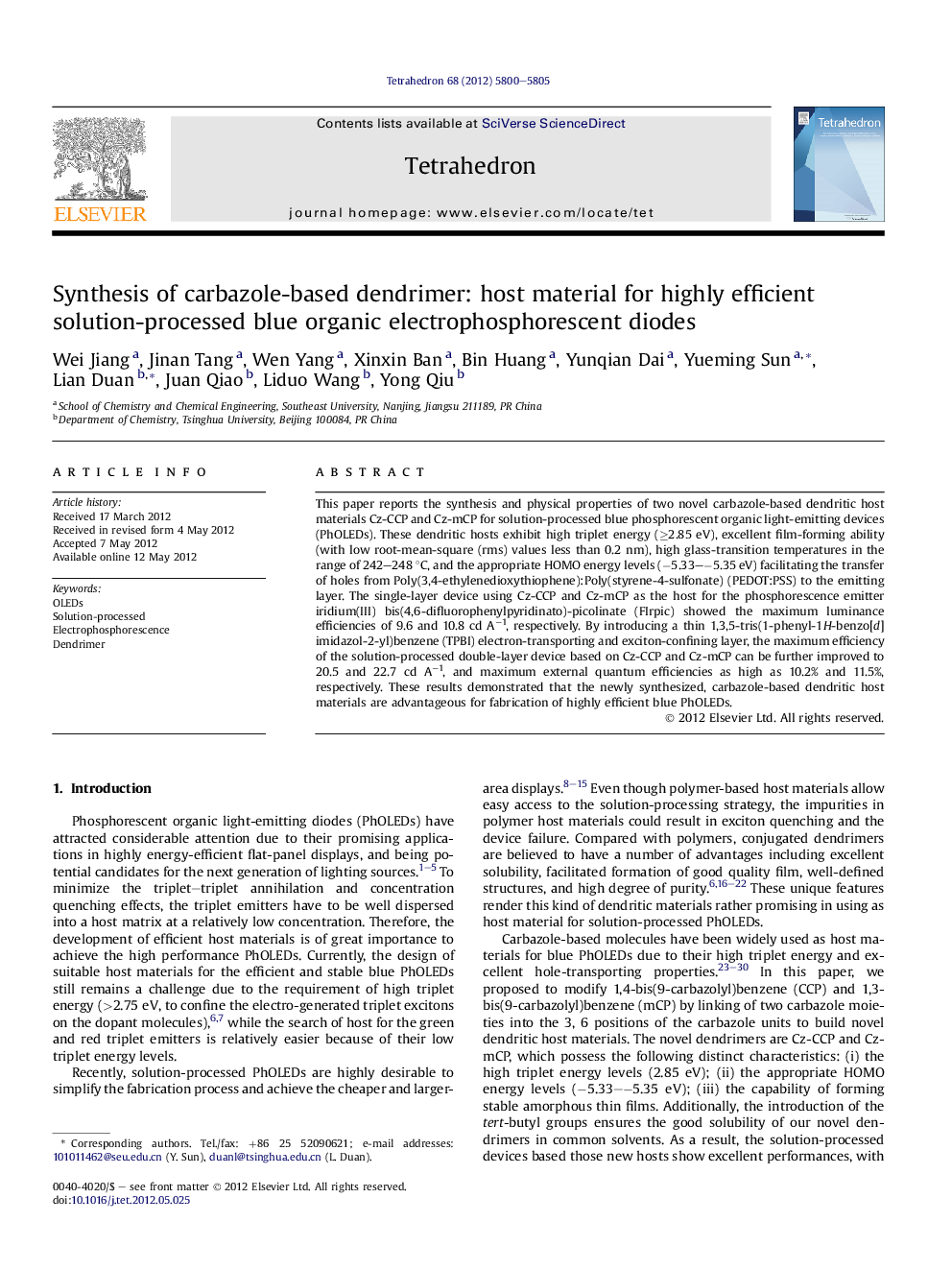| کد مقاله | کد نشریه | سال انتشار | مقاله انگلیسی | نسخه تمام متن |
|---|---|---|---|---|
| 5219064 | 1383346 | 2012 | 6 صفحه PDF | دانلود رایگان |

This paper reports the synthesis and physical properties of two novel carbazole-based dendritic host materials Cz-CCP and Cz-mCP for solution-processed blue phosphorescent organic light-emitting devices (PhOLEDs). These dendritic hosts exhibit high triplet energy (â¥2.85 eV), excellent film-forming ability (with low root-mean-square (rms) values less than 0.2 nm), high glass-transition temperatures in the range of 242-248 °C, and the appropriate HOMO energy levels (â5.33-â5.35 eV) facilitating the transfer of holes from Poly(3,4-ethylenedioxythiophene):Poly(styrene-4-sulfonate) (PEDOT:PSS) to the emitting layer. The single-layer device using Cz-CCP and Cz-mCP as the host for the phosphorescence emitter iridium(III) bis(4,6-difluorophenylpyridinato)-picolinate (FIrpic) showed the maximum luminance efficiencies of 9.6 and 10.8 cd Aâ1, respectively. By introducing a thin 1,3,5-tris(1-phenyl-1H-benzo[d]imidazol-2-yl)benzene (TPBI) electron-transporting and exciton-confining layer, the maximum efficiency of the solution-processed double-layer device based on Cz-CCP and Cz-mCP can be further improved to 20.5 and 22.7 cd Aâ1, and maximum external quantum efficiencies as high as 10.2% and 11.5%, respectively. These results demonstrated that the newly synthesized, carbazole-based dendritic host materials are advantageous for fabrication of highly efficient blue PhOLEDs.
Journal: Tetrahedron - Volume 68, Issue 29, 22 July 2012, Pages 5800-5805